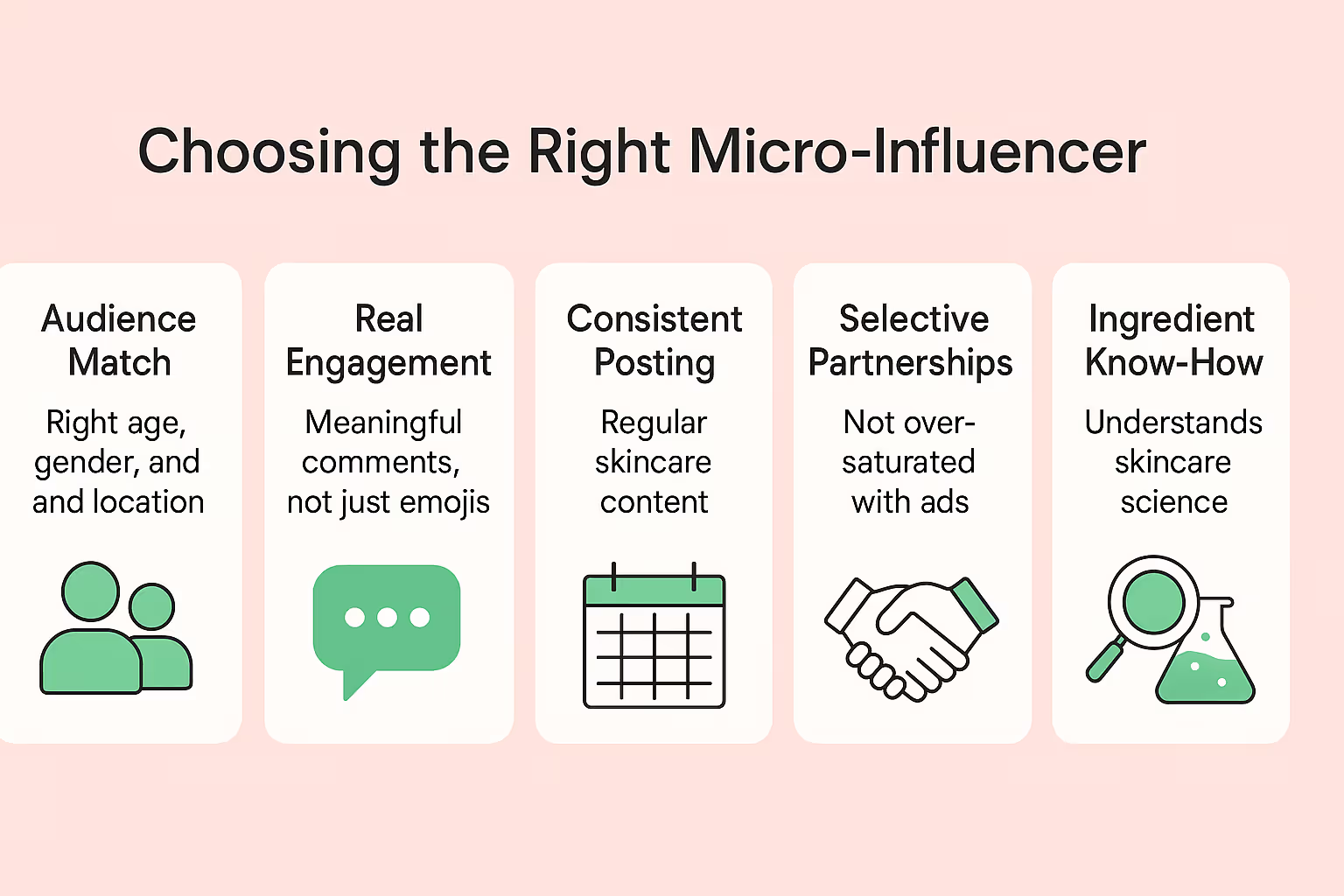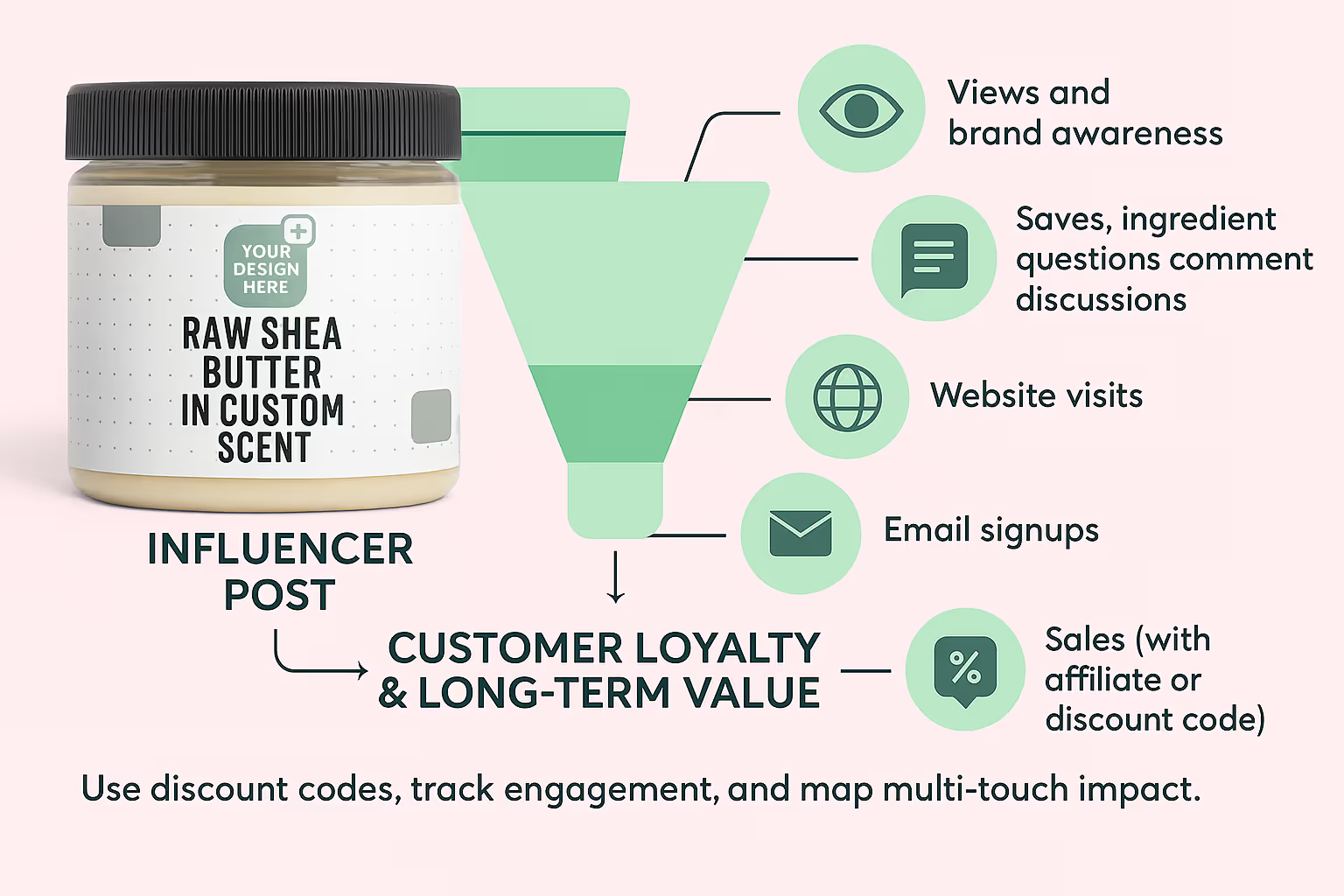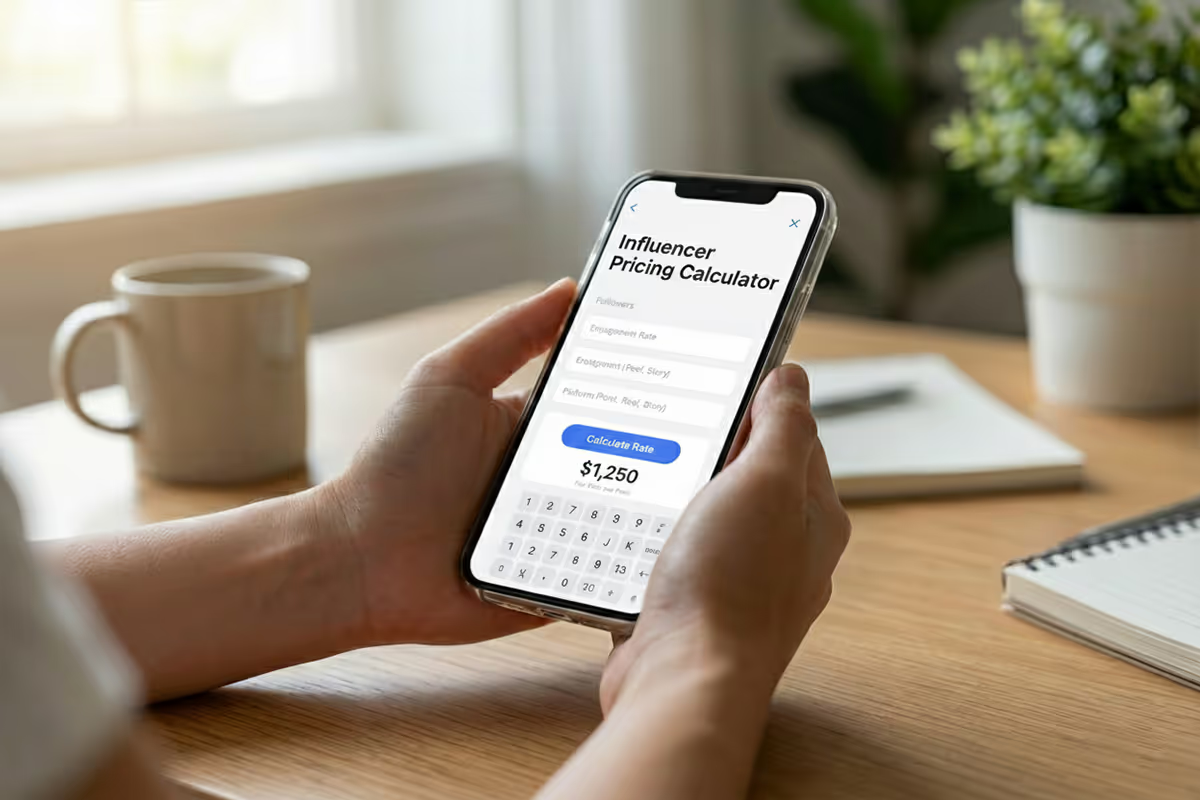How to Collaborate with Influencers to Sell Skincare? Influencer Partnerships

Influencer marketing has become the backbone of successful skincare brands, with beauty creators driving over $3.6 billion in annual product sales. 84% of Gen Z consumers trust influencers more than traditional ads, especially for personal care.
The skincare industry thrives on peer reviews and trusted recommendations. Buyers want real feedback before applying anything to their skin.
That’s why influencer credibility is crucial, and why brands must know how to collaborate with influencers to sell skincare so they can stand out and convert followers into loyal customers.
Build Strategic Influencer Collaborations for Skincare Sales with Easy Steps
The foundation of successful skincare influencer collaborations lies in matching the right creators with your brand values and target demographic.
Finding the Right Influencers
Start by identifying creators whose audiences genuinely align with your ideal customers. Look for influencers who already discuss skincare topics, demonstrate knowledge about ingredients, and maintain authentic engagement with their followers.
Micro-influencers with 10,000-100,000 followers often deliver better ROI than mega-influencers because their audiences trust their recommendations more deeply.

Key criteria for vetting potential partners include:
- Audience demographics: Age, gender, and location match your target market
- Engagement quality: Comments show genuine questions and conversations, not just emojis
- Content consistency: Regular skincare-focused posts over several months
- Brand partnership history: Selective collaborations rather than constant sponsored content
- Ingredient knowledge: Demonstrates understanding of skincare science and components
Structuring Win-Win Collaboration Deals
Successful partnerships require clear expectations and fair compensation structures. Many brands make the mistake of offering only free products, but experienced influencers expect monetary compensation for their time, creativity, and audience access.
Consider these collaboration models:
- Flat fee plus products: Guaranteed payment with free product samples
- Commission-based partnerships: Percentage of sales generated through unique codes
- Hybrid arrangements: Reduced flat fee plus performance bonuses
- Long-term brand ambassador programs: Ongoing relationships with escalating benefits
Always provide detailed creative briefs while allowing influencers creative freedom. The most authentic content happens when creators can speak about products in their voice while hitting key messaging points about ingredients, benefits, and usage instructions.
Creating Authentic Content Guidelines
Skincare influencers perform best when they can demonstrate real product usage over time. Instead of one-off posts, structure campaigns that allow creators to document their skincare journey with your products.
This might include initial impressions, week-two updates, and final results after a full product cycle.
Essential elements for authentic skincare content:
- Before-and-after documentation: Clear photos showing skin changes over 4-6 weeks
- Ingredient education: Explaining what specific components do and why they work
- Routine integration: Showing how products fit into existing morning and evening routines
- Honest feedback: Including any initial breakouts, adjustment periods, or unexpected reactions
- Usage demonstrations: Proper application techniques and amount recommendations
Encourage influencers to discuss specific ingredients and how they fit into existing routines. Audiences respond better to educational content that explains why certain ingredients work together rather than simple product placement.
This approach positions your private-label skincare products as thoughtful additions to established routines.
Evaluating Influencer Marketing ROI for Beauty Brands

Measuring influencer success means looking beyond quick sales to see how partnerships build brand awareness and customer loyalty over time.
- Measure both short-term sales and long-term brand impact.
Don’t focus only on direct sales from influencer campaigns. Consider how influencer content shapes brand awareness and customer lifetime value over time. - Use unique discount codes and affiliate links for clear ROI
These tools track immediate sales but capture only part of the overall influence an influencer has on purchasing decisions. - Recognize the extended customer journey.
Skincare buyers often research products across multiple channels and over weeks. Influencer reviews may plant interest, with purchases happening later via different touchpoints. - Evaluate engagement quality, not just quantity
Look beyond likes and comments to meaningful conversations, ingredient questions, and skin concern discussions; signs of genuine audience interest linked to better conversion potential. - Create influence maps for holistic tracking.
Track how influencer content drives traffic across multiple channels, website visits, social media follows, email signups, and purchases to see the full effect beyond direct sales.
Building Long-Term Influencer Relationships
Sustainable influencer marketing success comes from cultivating ongoing relationships rather than transactional one-off campaigns. The skincare industry particularly benefits from long-term partnerships because product efficacy requires consistent usage over time, and audiences value seeing authentic, extended experiences with products.
Developing brand ambassador programs creates mutual investment in success. Influencers who genuinely love your products become authentic advocates, creating content that feels natural rather than forced.
Regular communication maintains strong partnerships even between formal campaigns. Share company updates, new product launches, and industry insights with your influencer network.
This keeps your brand top-of-mind when creators are planning content or fielding audience questions about skincare recommendations.
Navigating Legal and Compliance Requirements
Working with influencers in the skincare space means playing by the rules, especially when it comes to advertising disclosures and product claims. Staying compliant not only protects your brand but also builds trust with your audience.
Disclose Paid Partnerships Clearly
Follow FTC guidelines and ensure all sponsored posts are labeled appropriately. Each platform, Instagram, TikTok, and YouTube, has its disclosure standards.
Share Approved Language
Provide influencers with pre-approved claims about ingredients and benefits. Avoid any unsubstantiated or medical claims.
Review Content Before It Goes Live
Especially for posts with ingredient spotlights or before-and-after imagery, pre-approval helps avoid compliance risks and protects your brand reputation.
Protect Authenticity While Staying Safe
Clear, honest guidelines help creators stay within legal bounds without sounding overly scripted. It’s about being both compliant and credible.
Common Mistakes That Kill Skincare Influencer Campaigns
Understanding what doesn't work in influencer marketing can be just as valuable as knowing successful strategies. Many skincare brands repeat the same costly mistakes that damage relationships and waste marketing budgets.
Prioritizing Follower Count Over Engagement Quality
The biggest misconception in influencer marketing involves chasing large follower numbers while ignoring engagement quality. A creator with 500,000 followers and 0.5% engagement often delivers worse results than someone with 50,000 highly engaged followers.
Skincare audiences particularly value authentic recommendations from trusted sources over celebrity endorsements.
Look for warning signs of fake engagement:
- Sudden follower spikes: Dramatic increases without corresponding content performance
- Generic comments: Repetitive phrases like "Nice!" or emoji-only responses
- Mismatched demographics: Followers from countries that don't align with the influencer's content language
- Low story engagement: Poor performance on Instagram Stories compared to feed posts
- Inconsistent posting: Irregular content schedules that suggest inactive audience management
Rushing Product Introduction Timelines
Skincare products require time to show results, yet many brands pressure influencers to post reviews after just a few days of use. This approach creates inauthentic content that sophisticated audiences easily recognize.
Effective skincare campaigns allow a minimum of 4-6 weeks for genuine product testing and results documentation.
Ignoring FTC Compliance and Platform Guidelines
Failure to properly disclose partnerships creates legal liability while damaging influencer credibility.
Each platform has specific requirements for sponsored content disclosure, and beauty products face additional scrutiny regarding health claims and ingredient representations.
Common compliance mistakes include:
- Buried disclosures: Hiding #ad or #sponsored tags in lengthy hashtag lists
- Ambiguous language: Using vague terms like "thanks to Brand X" instead of a clear sponsorship disclosure
- Platform inconsistency: Following Instagram rules on TikTok or vice versa
- Medical claims: Allowing influencers to make unsubstantiated health benefits statements
- Missing disclaimers: Forgetting to include "results may vary" language for before-and-after content
Over-Controlling Creative Content
Micromanaging influencer content destroys authenticity and often results in posts that feel sponsored. While brand guidelines are necessary, successful partnerships balance messaging requirements with creative freedom.
Influencers know their audiences better than brands do, and their authentic voice is precisely what audiences trust.
Leveraging Different Platform Strengths
Each social media platform offers unique advantages for skincare influencer marketing, and successful brands adapt their strategies accordingly rather than using one-size-fits-all approaches.
Instagram: Visual Storytelling and Shopping Integration
Instagram remains the dominant platform for skincare content, with its visual focus perfectly suited to before-and-after transformations, routine videos, and ingredient education.
Stories provide opportunities for authentic, behind-the-scenes content that feels more personal than polished feed posts. Instagram Shopping integration allows direct product purchases from influencer content, streamlining the customer journey.
Optimal Instagram content formats include:
- Carousel posts: Step-by-step routine demonstrations with multiple product shots
- Reels: Quick ingredient explanations or transformation reveals
- Stories: Daily routine updates and real-time product reactions
- IGTV: Longer tutorials and detailed product comparisons
- Live sessions: Q&A format addressing follower skincare questions
TikTok: Educational Content and Viral Potential
TikTok's algorithm favors authentic, educational content that performs well for skincare brands. Ingredient explanations, routine building, and product comparisons naturally fit TikTok's short-form video format.
The platform's younger demographic often discovers new brands through a TikTok shop, making it valuable for customer acquisition.
YouTube: In-Depth Reviews and Long-Term Documentation
YouTube allows for in-depth product reviews and tutorials that provide comprehensive education about skincare routines and ingredient benefits. Long-form content builds deeper trust and allows for more thorough product demonstrations.
YouTube's search functionality also provides ongoing discoverability for evergreen skincare content.
Measuring and Optimizing Campaign Performance
Successful influencer marketing requires continuous optimization based on performance data and audience feedback. Regular analysis of campaign metrics helps identify which partnerships drive the strongest results and which strategies need adjustment.
Track both quantitative metrics like reach, engagement, and conversion rates, alongside qualitative indicators such as comment sentiment and audience questions. This comprehensive approach reveals not just what's working, but why certain partnerships outperform others.
Test different collaboration formats to identify optimal approaches for your brand and audience. Some products perform better with tutorial-style content, while others benefit from lifestyle integration or comparison reviews. Systematic testing reveals these preferences and informs future campaign planning.
Expert Insights: Unlocking Growth with Creator Whitelisting
Most skincare brands stop at organic influencer posts, but top-performing companies scale results using creator whitelisting. This strategy lets you run paid ads from the influencer’s handle, combining their trust factor with your optimized targeting.
It’s especially powerful in skincare, where credibility drives conversions. Metadata shows whitelisted ads can outperform branded ads by up to 3x. Always negotiate usage rights upfront and test high-engagement content for best ROI.
Taking the Next Step in Influencer Collaboration
Successful skincare influencer marketing requires strategic thinking, authentic partnerships, and consistent optimization.
Start by identifying creators whose audiences align with your ideal customers, then focus on building genuine relationships that provide mutual value.
Begin with a small test campaign to refine your approach, then scale successful partnerships while continuously measuring results and optimizing performance. The investment in building strong influencer relationships pays dividends through increased brand awareness, customer trust, and sustainable sales growth.
FAQ
Related blogs

Influencer Pricing Calculator: Find Your Fair Rate for Posts, Reels & Stories
.avif)
How To Market Pet Products Through Storytelling: Win Attention, Build Trust, and Boost Sales Naturally
.avif)
How To Market Coffee To Gen Z: The High-Impact Blueprint Every Brand Needs
.avif)

